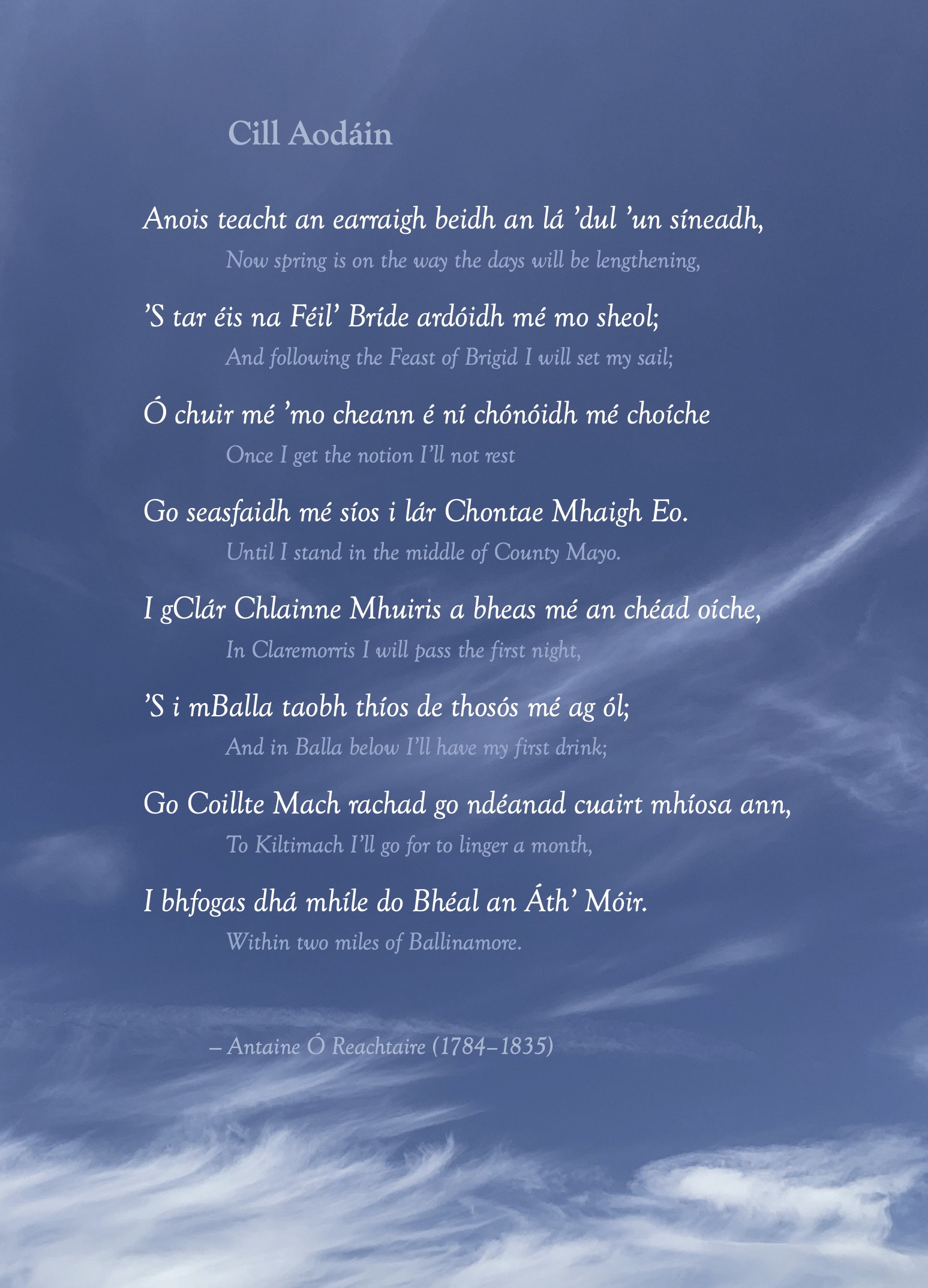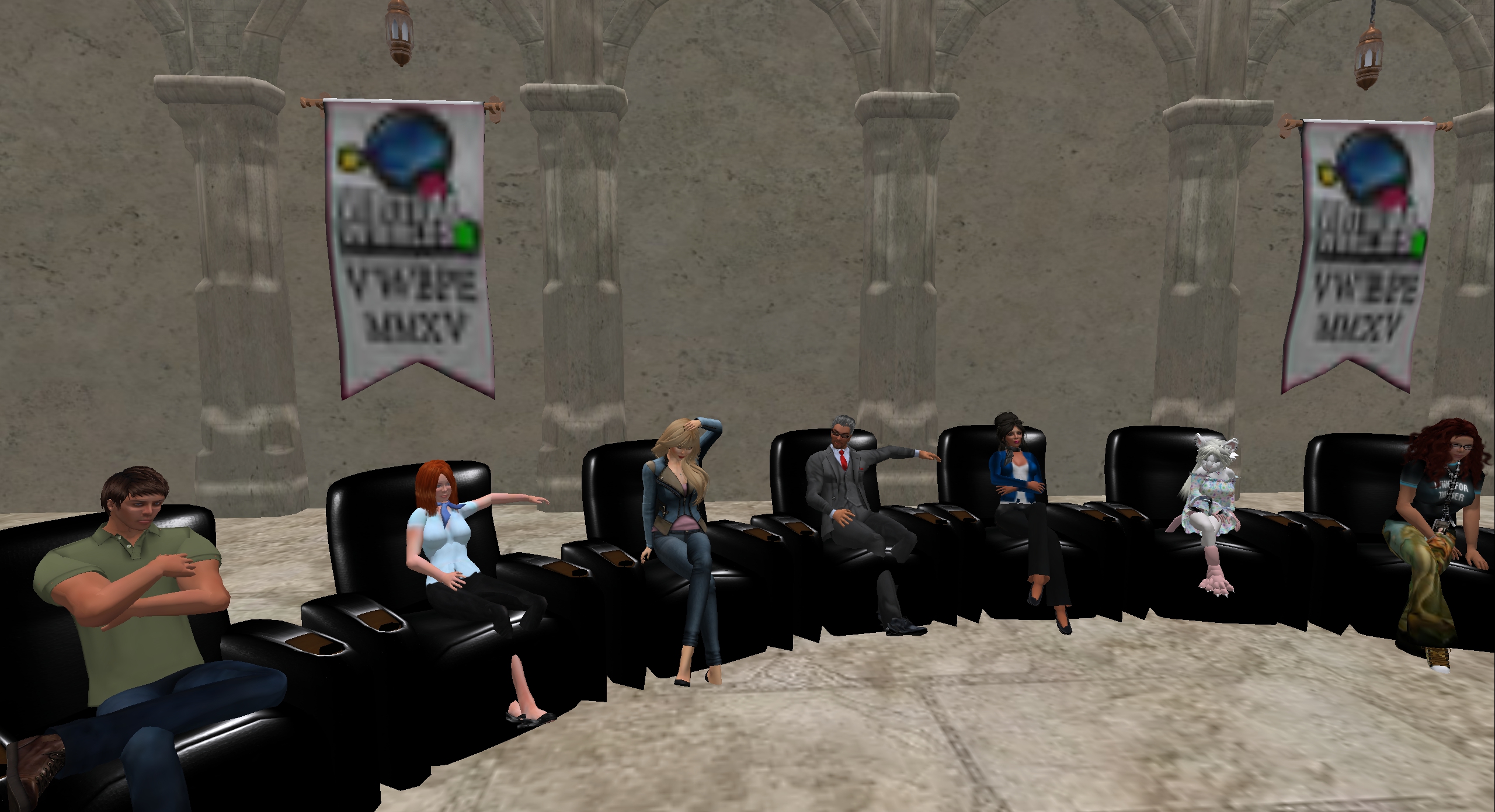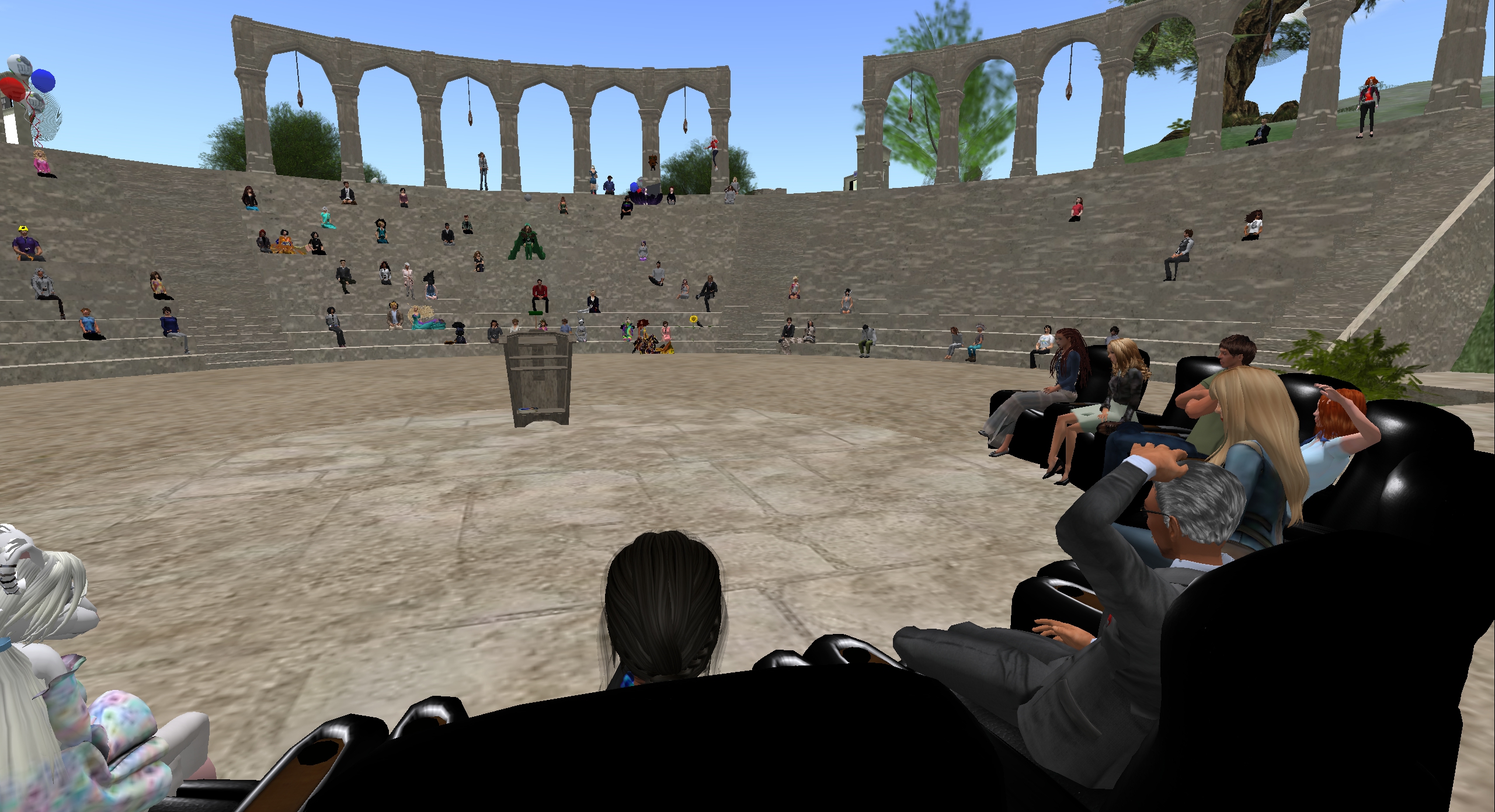Three Continents Meet: Metaverse for Higher Education
 Friday, April 1, 2022 at 5:55PM |
Friday, April 1, 2022 at 5:55PM |  Email Article |
Email Article | Spotlight talk in the ‘Creativity and Innovation in Design, Practice and Learning’ track at the Virtual Worlds Best Practices in Education (VWBPE) 2022 Conference: Phoenix Rising on 31st March 2022.
Presenters:
- Murat Gülmez / Magua Theriac, Çağ University;
- Acuppa Tae / John O’Connor, Technological University Dublin;
- Lissena Wisdomseeker / Lynne Berret, Whole Brain Health.
TU Dublin in Second Life (Acuppa Tae, 15 minutes):
I first found Second Life in January 2006 and had immense fun exploring the world and making new friends.
I had always been attracted by the idea of virtual worlds but this was the first time I got a real sense of a ‘world’ rather than a chat room. Second Life seemed to have come directly from the pages of William Gibson’s ‘Neuromancer’ (1984) and Neal Stephenson’s ‘Snow Crash’ (1992) and I was instantly smitten.
It didn’t take too long to recognise that the potential for education was enormous. I had already led the development of an undergraduate degree in visual art designed specifically for remote delivery on a small island of 120 inhabitants off the Atlantic coast of South-West Ireland. This kindled two particular interests of mine at that time. Firstly, how to use available technology to connect isolated communities with universities; and secondly, how to explore the potential for remote teaching of practical disciplines, such as art and design.
Working with a grant from the Learning & Teaching Technology Centre at the university I designed a prototype semester-long module to test teaching in a virtual world and offered it on a pilot basis to lecturers in Ireland and the UK in January 2009. Claudia Igbrude (aka Locks Aichi), a learning technology officer at the centre joined me to co-teach. The participants were an eclectic group comprising an engineer, philosopher, sociologist, pedagogical theorist, and musician among others. The key learning outcome for the pilot was to ensure participants experienced a genuine sense of working collaboratively in an online environment. This was achieved, in part, by setting a team project to be completed during the semester, which the participants were required to present in front of an invited audience at the final class meeting. The pilot was a success so, we submitted the module to the university programme board for formal validation as an undergraduate 5 credit elective module. This means about 100 hours of work for the students over a single semester. Delivery of “Virtual Environments: Is one life enough?” (aka IOLE) commenced in September 2009.
One of the lessons we learnt from the pilot was the necessity of supporting the development of a ‘learning community’ among the participants, as described by Lave and Wenger (1998). I already had experience of this approach with mature learners, so feedback from the pilot was a further indication of how useful it might be in the online context. The participants had experienced difficulty engaging with the team project which led to a slightly disappointing conclusion for some of them. I hoped that fostering a learning community would help future participants to support one another and result in a better team spirit.
Although the funding provided by the grant would have paid for the development of a private island for our campus the university’s finance procedures were so bureaucratic that I had already decided it would be simpler to teach the class on my own land. This worked well. However, within the first year we encountered a vibrant community that literally pulsed with excitement: Dublin Virtually Live had begun as an Irish Pub shortly after the launch of Second Life, but was now expanding to become a virtual recreation of Dublin city in Second Life. The community supported music performance, storytelling, DJ sessions, a St Patrick’s Day parade, informal gatherings and much more. It was managed efficiently and effectively by Sitearm Madonna (aka James Neville), on behalf of Ham Rambler (aka John Mahon), the entrepreneurial owner of the domain. We struck a deal with Ham which saw him provide a replica of one of our university buildings to host the class in return for two free places on the course for his Dublin residents. The people who availed of the places brought useful virtual world experience, real world experience, and maturity to the group of otherwise young undergraduate participants. It also extended the discipline base of the group from art and design to include linguists, engineers, sociologists, and PhD candidates. Basing ourselves in Dublin Virtually Live also embedded the course within an already established virtual community so, the participants were looked after by the members and could draw on community resources to integrate with greater ease.
Another unexpected benefit was that some of these participants subsequently became contributors to the module, enriching the content. Sitearm became a good friend and colleague and he joined the teaching team as a guest lecturer soon after completing the module. His expertise, his long career as an engineer with Exxon in the US, and his interest in the theory and practice of team work has contributed to the development and success of the module ever since.
Another key participant was Dudley Dreamscape, in Real Life: Dr Dudley Turner, a professor at the University of Akron, in Ohio, and Dean of the College of Creative and Professional Arts. Both he and Sitearm came to Ireland to speak at an annual conference organised by Second Life activists. “Meta Meets” took place in a different city in Real Life each year and we hosted it at TU Dublin in May 2010. The opportunity to meet virtual colleagues and friends in Real Life Dublin was very exciting at the time. It led to Dudley and I deciding to form a partnership and offer the module as a joint experience for students on both sides of the Atlantic. Dudley took the module descriptor back to Ohio and had it validated by his university as an elective module. In 2014 we brought our students together in class and co-taught the module over the following three years
Bringing students from different cultures and time zones together in a virtual space was new territory at that time. In order to ensure full engagement we split the participants into teams to work on the major project. Each team had at least two members from each university. The students needed to negotiate suitable meeting times outside of formal class meetings, taking account of the time difference. They gained invaluable experience from working with people they would never meet in Real Life and learning to use communication tools and virtual presentation methods that they might not otherwise have had the opportunity to master. (We wrote up the outcomes for a conference paper ‘Inter-University International Collaboration for an Online Course: A Case Study’ (2014).)
From the beginning, guest speakers in Second Life were generous with their time and experience, and contributed a wide breadth of knowledge to the module. Residents such as Karly Charlton (owner of EZ Living stores across SL in the early days), the late Circe Broom (developer of Sunset Jazz Club and Laurel Arts Isle), Elfay Pinkdot (host of the weekly jazz show Coffee and Pajamas) Ham Rambler (founder of Dublin Virtually Live), Symeon Siamendes (owner of Lauk’s Nest) and many others welcomed our students and generously shared their time and experience with us giving the participants a fully rounded experience, and understanding of the potential of virtual worlds and online collaboration. Such access to guest speakers from around the globe is just one of the significant advantages afforded by virtual worlds. In addition, professors from TU Dublin presented their work to the class. Dr Noel Fitzpatrick reported on his research into the philosophy of technology, with the French public intellectual Bernard Stiegler and Dr Glenn Loughran spoke about the impact of climate change, and possible interventions based on the latest archipelagic thinking.
Since 2015 Gentle Heron has been hosting a field trip to Virtual Ability Island. The visit never fails to have a major impact on students. For the first time, they really get a sense of what it means to be part of a community in a virtual world. Members of VAI share their life experiences with sensitivity and generosity giving an insight into the community, and the important role it plays in their lives. They demonstrate the seamless integration between the virtual and real worlds.
More recently, Valibrarian Gregg has been welcoming the class to the Community Virtual Library and introducing them to the concepts of metaliteracy and metamodernism. She explains the proposition in her recent book “Metamodernism and Changing Literacy: Emerging Research and Opportunities” (2020) and also introduces what it means to be a digital citizen and how important it is to be conscious of, and conscientious about, our responsibilities in this regard.
Most recently – Wisdomeseeker, Magua and I embarked on the most ambitious collaboration so far. Bringing together two universities from the opposites ends of Europe: Turkey, at the extreme East of the continent, straddling Asia and Europe Ireland so far West that it is not even physically attached to the continental land mass and a non-profit organisation based in the United States but operating largely in the metaverse. This was a challenge that each of us embarked on with some trepidation but also with relish!
I had been introduced to Wisdom a few years ago when she invited the class to visit Whole Brain Health on Inspiration Island. She, Thujia Hynes (Tooyaa) and Francisco Koolhoven (Fran) gave us the grand tour. In addition to hearing about all that goes on at WBH the students had the opportunity to play. They rode scooters and magic carpets, flying dangerously around the island and tried out yoga and tai chi moves with amazing ease. They even had an opportunity to show off their avatars’ dance moves. ‘Physical’ activity like this is very important to retain attention and even though it is done virtually by our avatars, it does help us keep our attention in focus.
Shortly after that Lissena introduced Magua to me. Facilitated by Sitearm, we three met to consider a possible collaboration. Then, meeting almost weekly over the summer of 2021 we explored options and possibilities for a new shared module. Soon we were joined by Tooyaa, Fran, Ghaelen and Catseye from WBH and Besitaa from Çağ University. We developed as a team and learned what was important to each of us. It was time well spent as our mutual respect for each other grew, and we developed our working methodology. This all led to the ‘International Student Project’, which took the best of what each of us had been doing so far and combined it into a new offering. It is clear to me now that the experience we each brought to the table provided the basis for a more rapid development than might otherwise have been the case.
We are now in the middle of the second semester of delivering the ‘International Student Project’ module.
Each of us contributes an essential part of the learning, but together we are offering students a singular and unique experience that is rich with cultural diversity.
From the beginning we intended to disseminate the lessons learned from this experience. We agreed that our collaboration would not merely be about designing and teaching the class but would also encompass conference presentations, papers for academic journals, and any other opportunity for sharing of our knowledge and experience that might turn up. Our intention is to encourage others to take up the challenge of working together and exploiting the unique opportunities offered by virtual worlds. The quality of volunteer work in the metaverse is an indicator of the potential for good and underlines the desire to support one another that is unlocked by positive community engagement.
That is the real story that lies at the heart of our collaboration.




